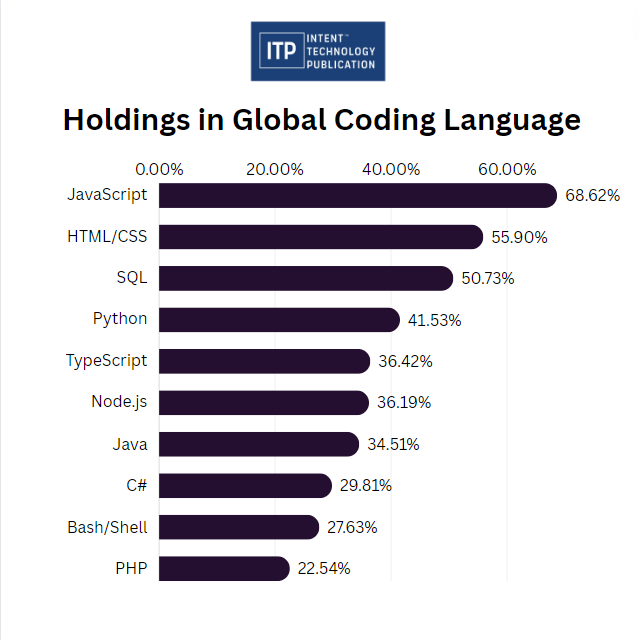or call: +1 (845) 347-8894

or call: +1 (845) 347-8894
or call: +1 (845) 347-8894

The technology industry thrives on constant change, making it crucial for developers to stay future-proof by continuously learning and adapting. At the heart of this evolution lies the ever-evolving world of programming languages – the tools that shape the digital world. These languages are constantly adapting to meet the new demands and challenges presented by technological advancements. This blog aims to illuminate the importance of understanding future-proof languages and equip developers with insights into the emerging trends that will define the future of programming languages.

As we embark on this journey, let’s first pay homage to the established giants: Python, Java, JavaScript, and C++. According to our latest market survey, Python holds an impressive 63.5% market share in AI/ML, illustrating its dominance in the field. Meanwhile, JavaScript takes the lead in web development, being utilized by a staggering 98% of all websites. In the realm of system programming, C++ continues to reign supreme, finding applications in game development, embedded systems, and high-performance computing. These languages have indeed carved their niches, but as technology advances, so must the tools that drive its evolution.
The future beckons with a distinct set of priorities, shaping the evolution of programming languages. Let’s delve into some of the key emerging trends:
In an era where cyber threats lurk around every corner, secure coding practices become paramount. Therefore, languages like Rust, which emphasize memory safety and robust mechanisms for preventing vulnerabilities, are gaining significant traction, evidenced by a 3% annual growth rate. Moreover, as developers increasingly prioritize security in their creations, Rust is emerging as a language to watch.
As parallel processing gains prominence and the demand for efficiently handling multiple tasks simultaneously increases, languages adept at concurrency become crucial. Notably, Go experiences an impressive 13% annual growth rate, while Kotlin, with a notable 14% growth rate, is making its mark. These statistics position both languages as potential frontrunners in the future tech landscape.
As the need for faster development cycles and increased developer productivity intensifies, simplicity takes center stage. Consequently, languages like Dart and Swift enter the scene, offering developers clean syntax, ease of learning, and intuitive features that boost their productivity. Furthermore, these languages, with their emphasis on simplicity, might reshape development practices in the years to come.
Domain-specific languages (DSLs) are experiencing remarkable growth, with Julia witnessing an impressive 17.8% annual growth rate in data science. In the realm of mobile development, Swift dominates, being utilized in over 50% of iOS apps. These specialized languages address the unique demands of their respective domains, offering a tailored and efficient approach to development processes.
In the age of Artificial Intelligence (AI), the need for languages suitable for development in this domain becomes increasingly crucial. Languages like TensorFlow (a specialized framework within Python) and Julia are at the forefront, addressing the specific requirements of AI development, such as handling large datasets and complex algorithms. These languages are well-positioned for the future as AI continues to evolve.
By examining the aforementioned trends, we can identify several languages that stand out with the potential to dominate the future of programming languages:
As we conclude this exploration, it’s crucial to acknowledge the inherent difficulty of predicting absolute dominance in the ever-evolving world of programming languages. However, based on the identified trends and their alignment with future needs, the potential of languages like Julia, Dart, Kotlin, Elixir, and Mojo shines brightly. The continuous evolution of languages underscores the necessity for developers to remain informed, and adaptable, and continuously hone their skills in this ever-changing landscape. The future of programming languages is dynamic and exciting, and developers armed with the right languages and a thirst for knowledge will be at the forefront of shaping the next generation of technological advancements.
